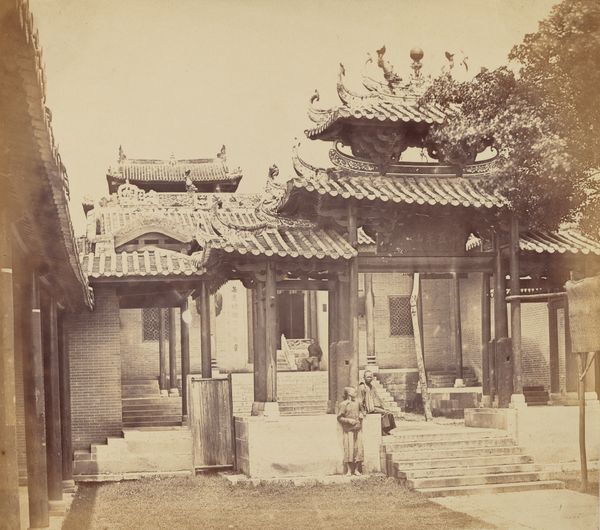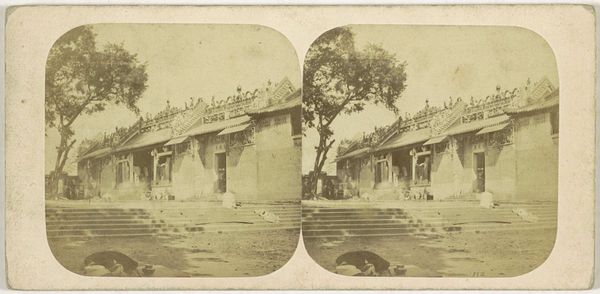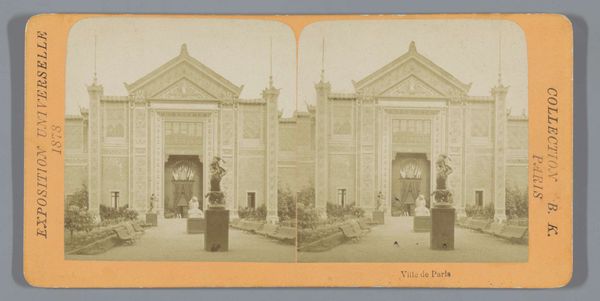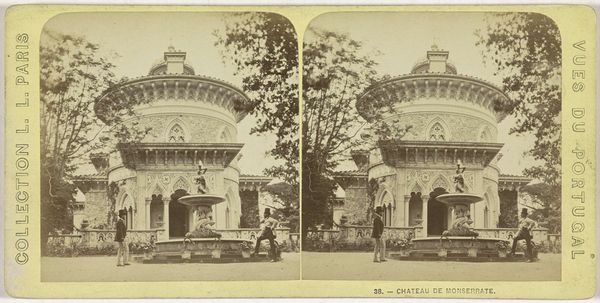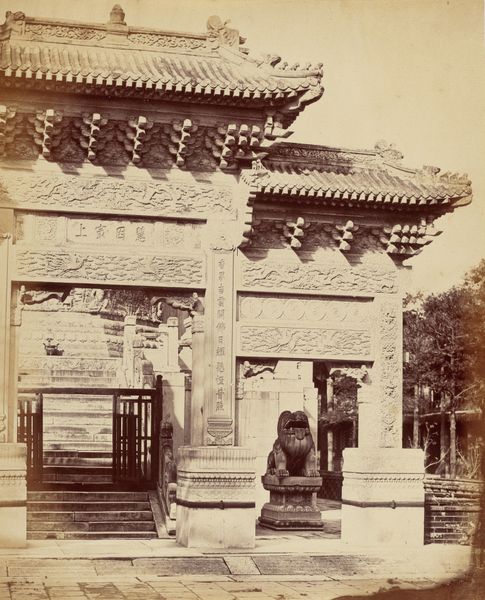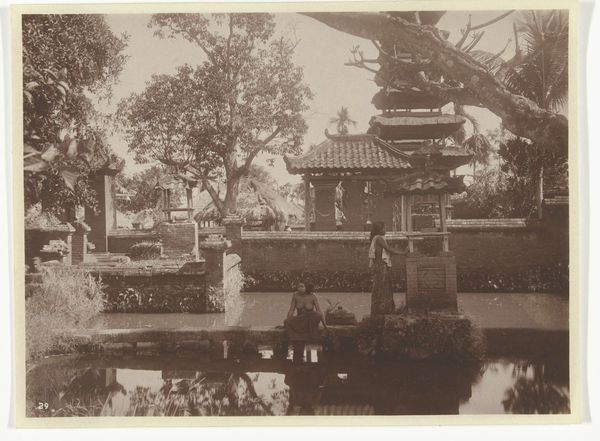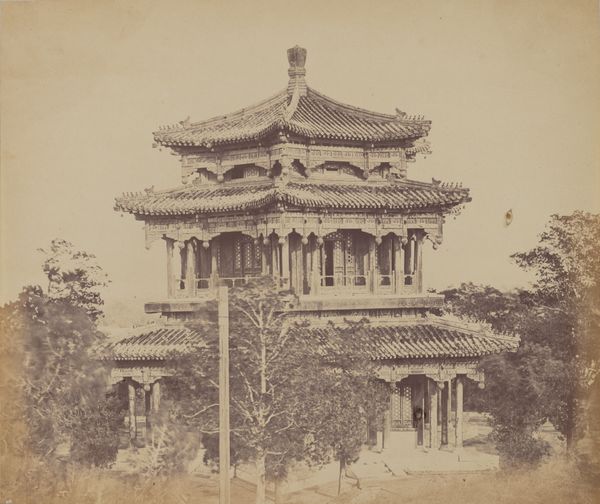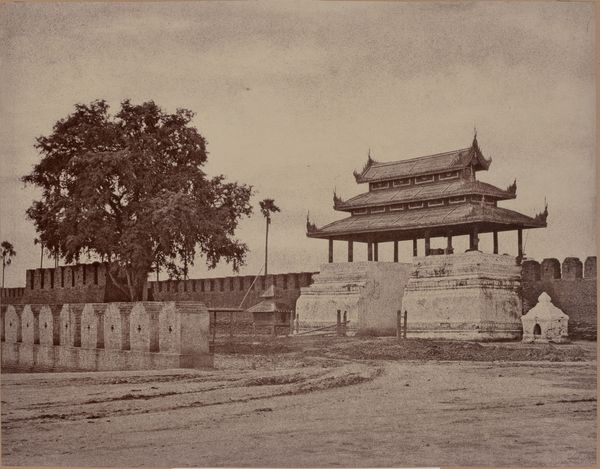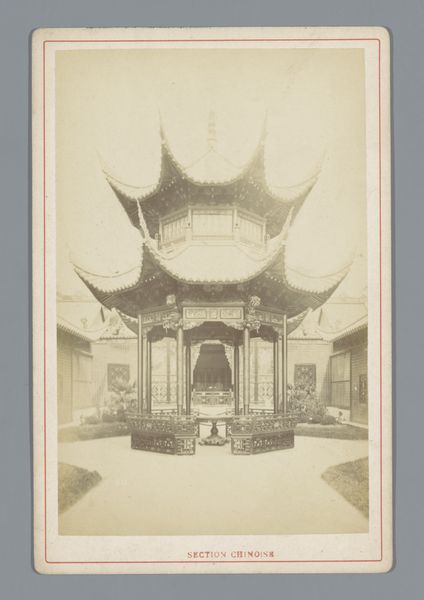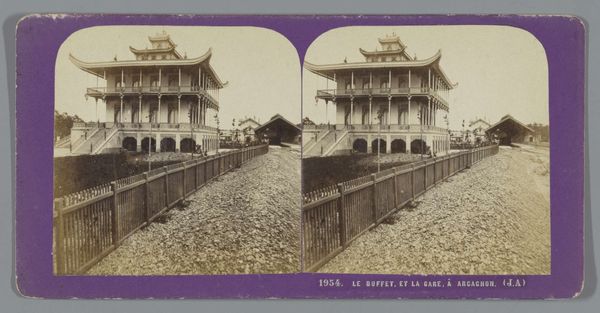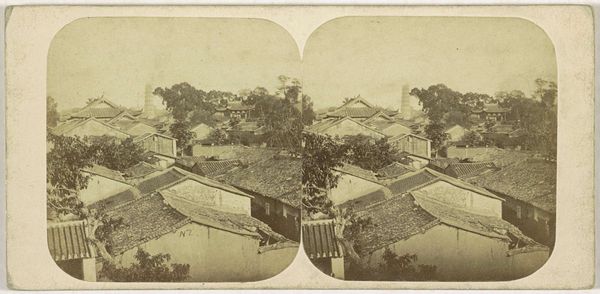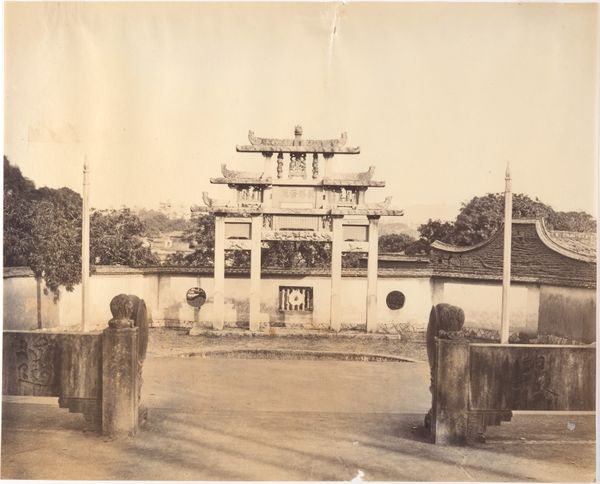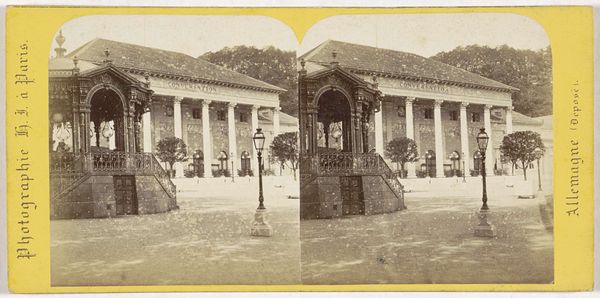
Views in China Canton. The Temple of the Five Gennii... c. 1850 - 1860
0:00
0:00
felicebeato
Rijksmuseum
print, daguerreotype, photography, watercolor
# print
#
asian-art
#
landscape
#
daguerreotype
#
photography
#
watercolor
#
coloured pencil
#
orientalism
#
watercolor
Dimensions: height 84 mm, width 174 mm
Copyright: Rijks Museum: Open Domain
Curator: This daguerreotype print, tinted with watercolour and coloured pencil, offers a view of “The Temple of the Five Genii…” in Canton, some time around the 1850s or 1860s. The photographer is Felice Beato. Editor: It’s beautiful, but also strange – the light, the flatness, gives it a ghostly quality, as if these buildings are memories of themselves. The parallel presentation as a stereo card enhances this uncanny sensation. Curator: Note how Beato uses the stereoscopic format to emphasise the architectural details of the temple. The repetition and slight shift in perspective invites our eye to consider symmetry, repetition and pattern throughout the whole image. Editor: The roof decorations, those almost comical figures lining the eaves, surely hold significance. The temple must have resonated deeply within the local community—five Genii! It hints at a pantheon, layers of spiritual beliefs interwoven with daily life. Curator: The hand-colouring softens the rigid geometry captured by the daguerreotype. Observe the chromatic choices, particularly the reds and greens against the washed-out white walls and faded blue doors—an attempt, I believe, to create a sense of harmony within the representational structure. Editor: Absolutely. Colour adds an emotive dimension—red for good fortune, perhaps? Those vibrant hues contrast starkly with the muted tones of the building itself. They bring those spiritual aspects forward, offering a glimpse of the ritual significance, an emotional resonance that would otherwise be lost to us today. Curator: The very format of a stereo card points to nineteenth-century desires: to grasp an 'authentic' three-dimensional impression of foreign lands, a form of visual possession driven by curiosity, but one also steeped in the Orientalist tendency toward generalization and romanticism. Editor: Do you think the way this medium lends itself to capturing sacred spaces offers a parallel to modern-day travel photography, with that quest to capture not only 'what we see,' but the ‘feeling' of being present somewhere special, embedded within a place that resonates deeply? Curator: It offers insight, but through the lens of Western perception, a constructed impression no less valid, but inherently bound to its historical context and to its internal structural system. Editor: I agree, still it serves as a compelling record that embodies not only documentation, but evokes our innate fascination for bridging cultures and connecting with the symbols from faraway spaces. Curator: Indeed. An object of intersecting intentions, and through careful visual analysis, we discern at least a few. Editor: Well said. It leaves me pondering how places of worship are designed to trigger emotion.
Comments
No comments
Be the first to comment and join the conversation on the ultimate creative platform.
